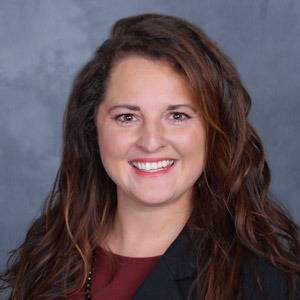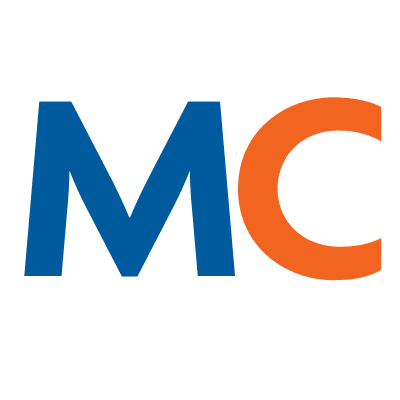- Solutions
- Solutions
- Home Health
- Hospice
- Life Plan Community
- Palliative Care
- Private Duty
- Senior Living
- Skilled Nursing
- Skilled Nursing
- Skilled Nursing Software
- Advanced Insights
- Customer relationship management
- Data and analytics
- Financial & operations management
- Marketing
- Nutrition management
- Referral management
- Regulatory compliance
- Retail management
- Resident engagement
- Revenue cycle management
- Skilled nursing interoperability
- Partners
- Blogs
- Resources
- About
- User Conference

3 Ways technology enhances the senior dining experience
Dining operations are an essential linchpin of senior housing organizations. Every resident participates in dining, whether in independent living, assisted living, or skilled nursing settings. Day in and day out, senior care providers are challenged with creating meals that are dynamic, engaging and varied.
In addition to providing satisfaction and choice, meals must meet the varying nutritional needs of residents, and operators are tasked with staging a dining experience that ensures all residents have access to their required meals throughout the day. A successful dining program can also be used as a sales and marketing tool to increase census, resident satisfaction, and referrals.
Dining operations are also one of the more complex aspects of senior housing. The cost to manage and maintain a dining program is substantial and, without solid cost controls in place, can tighten already narrow operating margins.
Senior care providers can leverage technology to create efficiencies in dining operations, keep costs in check, predict what residents want in a dining program, and enhance the overall senior housing experience.
Here are three ways technology can enhance the senior dining experience:
1. Engaging with residents about their dining preferences.
The overarching mission of senior housing is to ensure the needs of older adults are met, that they remain engaged as they age, and that they are satisfied with the care they receive.
Providers can use technology to engage with residents about their dining needs and preferences. Using mobile capable platforms, residents can review daily menus and decide what they want to eat ahead of time, when they want to dine, how they want their meals prepared, and can be shown nutritional details of their meals, all to make mealtime memorable. Technology provides flexibility and freedom of choice, while ensuring accuracy and safety, helping residents maintain independence with a personalized dining experience.
Just as the general public pivoted away from in-person dining during the pandemic and toward curbside delivery and takeout, COVID-19 has accelerated the adoption of technology for dining in senior housing. Residents have proven themselves very adept with technology, and future residents will enter senior housing with a stronger tech foundation. Providers must continue to refine how they use dining technology to engage with residents, and to keep them satisfied and informed about their dining choices.
2. Mapping dietary restrictions in the EHR to senior housing menus.
Dining managers can use technology to plan menus, schedule meals, and establish sitting locations to ensure residents can dine at their convenience and with visitors or close friends inside a community.
Providers can use data gleaned from menus, meal planning and residents’ dietary preferences to streamline purchase orders and create more enticing menus based on historical information and trends.
For residents with dietary restrictions, menu choices and restrictions can be documented via electronic health record systems to help track positive health outcomes, drive selections, and make suggestions to improve the residents’ dietary health. The capability to customize each resident’s options to their personalized nutrition needs is of extreme value to senior care providers. A nutrition management software program that allows providers to build and adjust dietary options around individual resident needs supports the highest level of person-centered care. Operators are successful when they can monitor therapeutic diets, have capabilities to complete menu details, and be alerted of malnutrition.
Finally, technology can be used to track the effectiveness and efficiency of dining staff during meal times and to identify areas for improvement. The capability to automate end-to-end operations in dining service supports the aggregation of data for reporting outcomes of services and care provided.
3. Enabling online ordering for senior housing residents.
The software and hardware platforms needed to enhance dining operations with technology are fairly commonplace these days, although programs continue to evolve across the dining landscape.
Elite dining software can track popular menu items among residents, and benchmark how much they consume at each meal. Providers can use this information to tailor purchasing based on residents’ preferences, reducing dining expenses over time.
For residents who prefer to dine alone in their apartments or in a non-communal dining setting with friends and family, an online ordering system is essential. These platforms allow residents to select menu items ahead of a meal, request special dishes, specify how they should be prepared, and identify when they should be ready for pickup or delivered to their rooms.
Learn more about MealTracker.
See what MatrixCare can do for you
Amy Wooton
Amy Wooton, RDN, is a registered dietitian licensed in the state of Florida with over 18 years of experience in clinical nutrition leadership for senior communities as well as acute care, food service management, nutrition informatics, and wellness education. Amy is an active member of the Academy of Nutrition and Dietetics, was appointed Vice Chair on the Interoperability and Standards Committee, and is the leader of the Academy’s Nutrition Care Process Workgroup. Amy most recently accepted a Leadership Award from the Florida Academy of Dietetics. She has achieved years of diversified experience in all spectrums and disease improvement and prevention throughout each lifespan. Amy is a dedicated leader and is passionate about the success of nutrition interventions as an electronic solution to healthcare crises.
Related Posts




See MatrixCare in action
Start by having a call with one of our experts to see our platform in action.
MatrixCare offers industry-leading software solutions. Thousands of facility-based and home-based care organizations trust us to help them improve efficiency and provide exceptional care.
© 2025 MatrixCare is a registered trademark of MatrixCare. All rights reserved.




